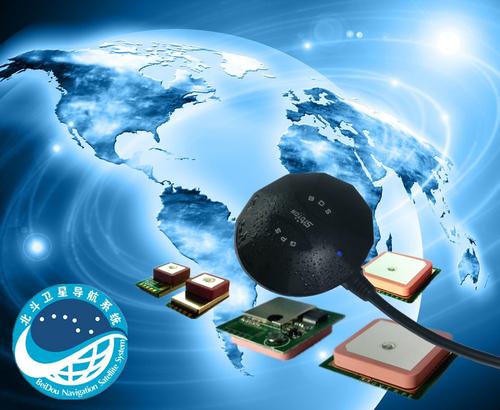Global Navigation Satellite System
The GLONASS system consists of three parts: satellites, ground measurement and control stations, and user equipment. The system consists of 21 working stars and 3 The GLONASS system began to be developed in the 1970s, and the first satellite was launched into orbit in 1984. The first part is common to all GPS receivers, such as satellite clock error, ephemeris error, ionosphere error, troposphere error, etc.

Basic Introduction
The Global Navigation Satellite System (GNSS), also known as GLONASS (Russian: ГЛОНАСС), is a Russian-developed satellite navigation system similar to the U.S. Global Positioning System (GPS) and the European Union's under-construction Galileo positioning system. The system is operated by the Russian government.
The GLONASS system consists of three parts: satellites, ground measurement and control stations, and user equipment. The system consists of 21 working satellites and 3 backup satellites distributed in 3 orbital planes, 8 satellites in each orbital plane, with an orbital altitude of 19,000 kilometers, and an operational period of 11 hours and 15 minutes. GLONASS was developed in the 1970s and the first satellite was launched into orbit in 1984. However, due to insufficient space funding, some of the satellites of the system once aged, the most serious had only six satellites left in operation, in December 2003, the new generation of satellites developed by the Russian Applied Mechanics Research and Production Joint Company was delivered to the Federal Space Agency and the Ministry of Defense for trial use, in preparation for the 2008 comprehensive renewal of the Glonass system. In terms of technology, the GLONASS system is more resistant to interference than GPS, but its single-point positioning accuracy is not as good as that of the GPS system. 2004, India and Russia signed the Long-Term Cooperation Agreement on the Peaceful Utilization of the Russian Global Navigation Satellite System (GLONASS) and formally joined the GLONASS system, with plans to launch 18 navigation satellites jointly.
Factors Affecting Accuracy
GPS positioning is the use of a group of satellites pseudo-distance, ephemeris, satellite launch time and other observed quantities to be, but also must know the user clock difference. Therefore, in layman's terms if you want to know the latitude and longitude in addition to the altitude, then, it must be received on the 4 satellites in order to accurately locate.
There are three parts to the GPS error:
The first part is all GPS receivers have, such as satellite clock error, ephemeris error, ionospheric error, tropospheric error and so on;
The second part is the propagation delay error;
The third part is the error inherent in all GPS receivers, such as channel delay, multipath effect, internal noise and so on;
The first part of the error can be completely eliminated using differential techniques;, the
The second part of the error can also be eliminated for the most part, depending mainly on the distance between the reference receiver and the user receiver.
The third part of the error cannot be eliminated, for specific reasons.














